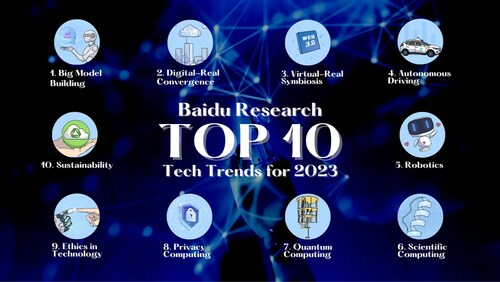A data-driven "fourth industrial revolution" has long been predicted. Now, the backbone for that platform is finally becoming a reality. The long-promised benefits of cyber-physical industrial systems are within sight.
The year 2019 will be remembered as the year that true cellular connectivity for the Internet of Things (IoT) finally got going. Nowadays not a week goes by without a new announcement of a new 4G NB-IoT / LTE-M network rollout. Yet the future for industry is already racing towards the fifth generation (5G) of wireless communication technology.
5G promises lightning-fast speed, barely noticeable latency (or communication response time) and vastly increased capacity. All four major U.S. carriers have green-lighted test networks and partial implementations in some cities.
The benefits of marrying the physical world with digital technologies have been discussed for what seems like a generation. Many industries could use the intelligence gleaned from connected systems to gain critical insights about their operations and how to make improvements that will make a genuine difference to their bottom line. While 4G is already creating dramatic improvements for industries around the world, it’s 5G that’s creating the greater buzz.
Data alone is not enough
Jani Vilenius, Director of Research and Technology at Sandvik, says that data is already driving industry around the world: “Everyone is already collecting, and to a certain extent using data. But improved connectivity is needed to truly utilize the data and add business value. When we add more Artificial Intelligence (AI), machine learning, and voice/image recognition into everyday systems, the bandwidth requirements mean 5G is inevitable to leverage the new capabilities.”
Industry 4.0 was supposed to bring about these benefits, but up until now there’s been a crucial element missing. Turning the idea of a collaborative, adaptive, real-time industrial digital system into a reality needs a truly agile communications infrastructure.
Beyond incremental improvement
You can be forgiven for thinking the move from 4G to 5G is merely about incremental speed improvements, with little need for all the hype. After all, the 4G/LTE (Long Term Evolution) communications architecture of today has hooked up approximately 3 billion mobile devices.
But in truth, the difference between 4G and 5G is not like comparing one iPhone model with the next, it’s more like comparing a horse and buggy to an electric race car.
Yes, 3G and 4G technology is most often equated with smartphones. That’s because the systems were designed for voice and mobile data respectively. And while it’s true that 5G’s dramatic speed increases will mean so much more than just higher-quality streaming and lightning quick downloads, the fact that it’s been designed from the ground up for data connectivity will be the game changer.
Faster connectivity and low-to-no latency will unlock operational benefits in every industry on the planet. Up until now there has been only talk, but with test systems now in place, those operational benefits are becoming clear.
Taking the connected factory to the next level
In a market reliant on data-intensive machine applications, the higher speeds and low latency of 5G is required for the effective use of autonomous robotics technology, wearables and virtual reality.
Unlike previous jumps in levels of technology in industry, 5G won’t fundamentally redesign the production line. But what it will do is offer manufacturers an opportunity to build smart factories that can adapt to changing market conditions.
The increasing capabilities of smart devices and the factories that make them won’t just impact competition within a set industry. As competition shifts from product-based to system-based, formerly clear industry boundaries will be blurred. Traditional manufacturing companies may soon find they are competing as part of a much broader automation industry, for example.
Healthcare: Enabling remote surgery
The low latency of 5G is set to revolutionize the healthcare industry, most notably in the operating theater. Experienced surgeons can advise more junior colleagues via a video connection or could even operate the surgical device remotely. You could be forgiven for thinking this sounds unlikely, yet it’s already happened.
In early 2019, the world’s first live surgery via remote assistance took place successfully in China. An experienced surgeon inserted a stimulation device in the brain of a Parkinson's patient. The almost instantaneous latency of 2 milliseconds allowed the surgeon to accurately conduct the procedure as if they were right next to the patient, whereas in fact they were 3,000 kilometers away. The latency resembles surgery using a traditional cabled monitor solution.
Autonomous technology on the road and underground
The improvements to network latency will give applications and devices the ability to communicate in close-to real-time. This should ease the safety concerns of autonomous vehicles, providing them the ability to constantly communicate with the ever-changing environment around them.
This of course will have significant impact on mining operations, something Sandvik is aware of. Already, Sandvik has signed an agreement with Nokia to further develop solutions based on private LTE and 5G technology, much of which will take place at the Sandvik test mine in Tampere, Finland.
“Our focus to date has been on private LTE technology, which offers speed, latency, reliability and privacy benefits over Wi-Fi. It’s one of the technologies our customers are asking for now,” explains Vilenius. The benefit to Sandvik in focusing on LTE is simple. (LTE stands for Long-term Evolution and isn’t as much a technology as it is the path followed to achieve 4G speeds). Customer demand is there, and the hardware can easily be upgraded to 5G when the time comes. READ MORE...
 IMAGE SOURCE,GETTY IMAGESImage caption,
IMAGE SOURCE,GETTY IMAGESImage caption,
 IMAGE SOURCE,GETTY IMAGESImage caption,
IMAGE SOURCE,GETTY IMAGESImage caption,
 IMAGE SOURCE,GETTY IMAGESImage caption,
IMAGE SOURCE,GETTY IMAGESImage caption,
 IMAGE SOURCE,GETTY IMAGESImage caption,
IMAGE SOURCE,GETTY IMAGESImage caption,
 IMAGE SOURCE,GETTY IMAGESImage caption,
IMAGE SOURCE,GETTY IMAGESImage caption,
 IMAGE SOURCE,GETTY IMAGESImage caption,
IMAGE SOURCE,GETTY IMAGESImage caption,
 IMAGE SOURCE,GETTY IMAGESImage caption,
IMAGE SOURCE,GETTY IMAGESImage caption,
 IMAGE SOURCE,GETTY IMAGESImage caption,
IMAGE SOURCE,GETTY IMAGESImage caption,
 IMAGE SOURCE,GETTY IMAGESImage caption,
IMAGE SOURCE,GETTY IMAGESImage caption,
 IMAGE SOURCE,GETTY IMAGESImage caption,
IMAGE SOURCE,GETTY IMAGESImage caption,
 IMAGE SOURCE,GETTY IMAGESImage caption,
IMAGE SOURCE,GETTY IMAGESImage caption,
 IMAGE SOURCE,GETTY IMAGESImage caption,
IMAGE SOURCE,GETTY IMAGESImage caption,
 IMAGE SOURCE,GETTY IMAGESImage caption,
IMAGE SOURCE,GETTY IMAGESImage caption,























